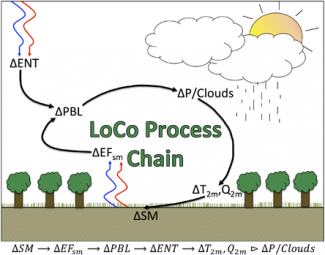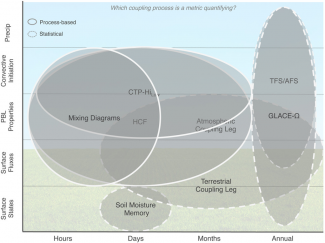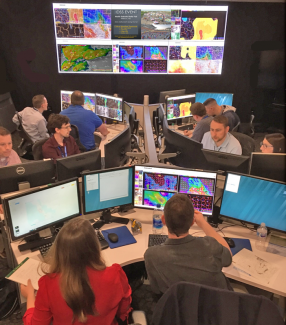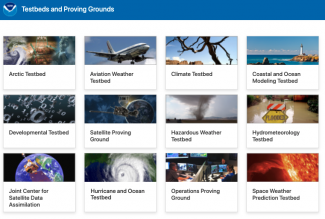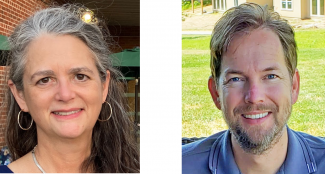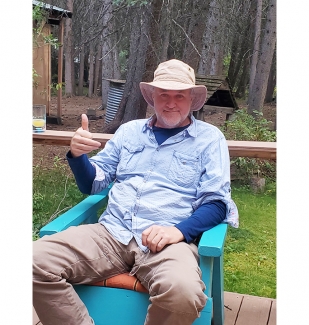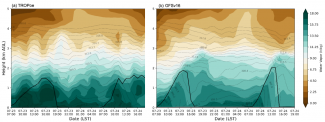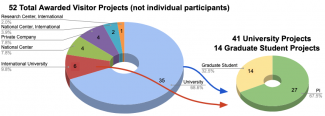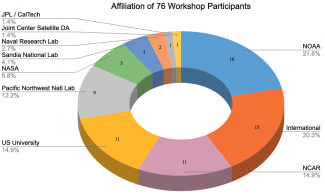Randy Pierce is a NOAA partner whose software engineering talent supports METexpress. His software engineering role was inspired by his love of detail, building things, and an early curiosity about engineering.
From the beginning, he always had a passion for understanding how things work. He earned a dual bachelor's degree in physics and electrical engineering technology from Colorado State University Pueblo in the Colorado town where he was raised. After graduation, Randy was hired by Storage Technology Corp in Louisville, CO where he settled and made his home, married, and raised two kids. He spent a dozen years there as a hardware engineer developing advanced hardware and software used for automated testing of state-of-the-art enterprise level storage systems. He then pivoted to software engineering, but to make that leap replete, Randy returned to school, at night, to earn a Computer Science degree from Chapman University. After working in a software role for another 14 years with the same company, he and a couple of engineering friends were inspired to create and launch a virtual storage product of their own. In fact, they succeeded in developing the product, but selling it was a greater challenge, as is often the case. After that experience, and a couple of other short-term projects in the area, Randy landed a position with NOAA’s Global Systems Laboratory (GSL) in Boulder decoding weather data from BUFR format. Somehow, the role and responsibilities grew, and he found himself increasingly involved with lab software. Randy became instrumental in the development of the Model Analysis Tool Suite (MATS) framework for the lab and of a newer data ingest paradigm that can store lab verification data in a noSQL document database. MATS, as well as MET, historically used MYSQL relational databases for capturing and organizing meteorological data for statistical evaluation.
In Randy’s words, “I think about software, and data almost all the working day - and sometimes at night. Not because I worry about it, but because I love to build things and I can build things with data and software without having to lift heavy objects or get very dirty! Algorithms and patterns can be fascinating.” He always knew he wanted to be an engineer, and originally, he considered becoming an electrical engineer, but as it is with most lives, interests change and opportunities present themselves, so he shifted his focus to software engineering.
When he isn’t solving coding issues, he can be found enjoying the outdoors or building something in his large shop. He loves working with wood, metal, or whatever material presents inspiration. Unafraid of a challenge, he’s currently tackling the rewiring and re-plumbing of a mountain cabin. He’s an avid (and social) canoeing enthusiast who explores rivers with friends, Word to the wise, he is an accomplished pool player and plays in a league or two, so be forewarned before you challenge him to a friendly game. Hiking, backpacking, fishing, hunting, and anything else that involves the outdoors is where he replenishes.
Vis-a-vis “replenishing,” Randy dreams of developing the perfect battery as a bucket-list item. When asked about this esoteric dream, he replies, “I believe that we as a society need to convert to electric transportation and renewable energy as quickly as we can. Improving batteries is a part of this. I also believe that electric cars are by far more reliable and less expensive than gas powered cars when considered over the long run. I have owned an electric car since 2017 but I want a Rivean R1S SUV because it is, in my opinion, the best electric SUV available (well, available next year). That car can take myself and five companions to any paddling trip I can imagine.”
Randy’s advice? “Waste no days.” It seems evident that he uses all of his days to the fullest.
